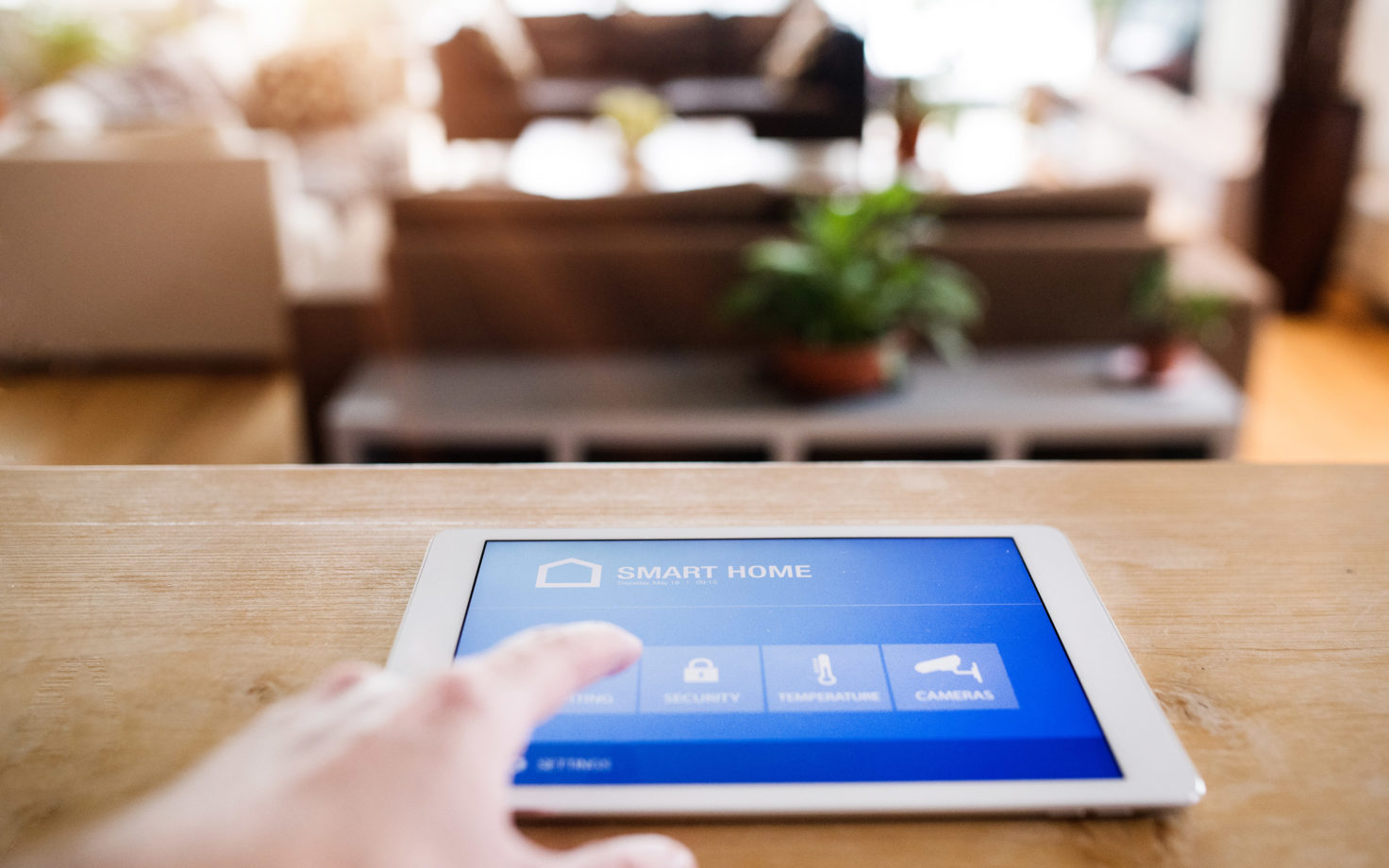
Home automation at the service of your wallet
Find Prelude in the interview of Quentin Pierre by Fokus Ma Maison.
Often associated with comfort and security, home automation, i.e. the automated and centralized management of a home’s electrical equipment, is also a valuable ally in saving energy. And if we look further, to reduce the carbon impact of households.
« Home automation is the automation of a building, and the activation of electrical systems according to the presence or absence of inhabitants», explains Etienne Gravy, an engineer by training and founder of the home automation section at HELHa (Haute École Louvain en Hainaut). When we think about this technology, it is often the notion of living comfort that comes to mind first. But behind the lamps that go out without switches and the shutters that open by themselves, there is an energy and financial issue that the Belgians are increasingly aware of. « Today, I think that 75% of my customers come to home automation to optimize their energy management and lower their bills », says Quentin Pierre, partner and system integrator at Prelude.
VERY PRECISE
Immediately, we think of the motion detection system and automatic extinction of the lamps. « But for me, it is especially at the thermal level that home automation plays an essential energy role ». states Q. Pierre. « I’m mainly talking about a room-by-room heating system, which is especially interesting in renovation work ».Concretely, the home automation specialist installs a temperature sensor in each room of the house and a single solenoid valve that can be controlled from one place in the building. «This makes it possible to create a very precise heating schedule for each room, which can be controlled remotely, for example by telephone. »
SAVE MONEY
Each space, therefore, receives an independent instruction, planned or in real-time, which sticks to the realities of its use and the possible unforeseen events. Based on this principle, home automation can also be deployed in small applications that are very useful for saving money. One example is the contactor system on doors and windows, which switches off the heating if a window is left open for too long. Thus, no more running the meter for a deserted teenager’s room, for example.
« Private individuals may not have the key to improving the climate situation, but home automation certainly allows the accumulation of small and economic gestures that, together, count »
THE INFORMATION
Another usefulness of home automation is the precise visualization of consumption. « You can use a single interface to retrieve information from the various meters and, from there, you can set up very targeted regulation actions yourself, » explains Q. Pierre. It’s also ideal when it comes to renewable energies. «By cross-referencing information, a home automation system can determine the right times to reinject electricity into the network or, on the contrary, to store it,» adds E. Pierre. Gravy.
AT WHAT COST?
So, would we dare to make home automation a key player in the climate challenge? If we go to extremes, of course,” says the engineer. « Individuals may not have the key to improving the climate situation, but home automation certainly allows the accumulation of small gestures and savings that, together, count. « But at what cost? » For a room-by-room heating system, if you start with 12 rooms, you can count on 2,000 euros,» says Q. Pierre. For a renovated house, the investment would be amortized thanks to the energy savings in 5 years maximum. «You have to understand that this energy aspect is the only one in home automation that really pays for itself. »
A GLOBAL PROTOCOL
However, given the interconnected and sophisticated nature of the technology, it is better to go through professionals, if only to get advice. « If you know from the outset that you want to integrate a home automation system into your home, choose your architect carefully, because not everyone makes it a priority, » warns E. Gravy. » And if, like me, you think it’s better to use the KNX system, which is a global protocol that allows products from different manufacturers to communicate, leave the design and configuration to a professional home automation specialist. »
However, most integrators offer flexible services, ranging from complete system design and integration to a « simple » critical piece of hardware previously chosen by the customer. So it’s up to everyone to put the cursor where they want it.
